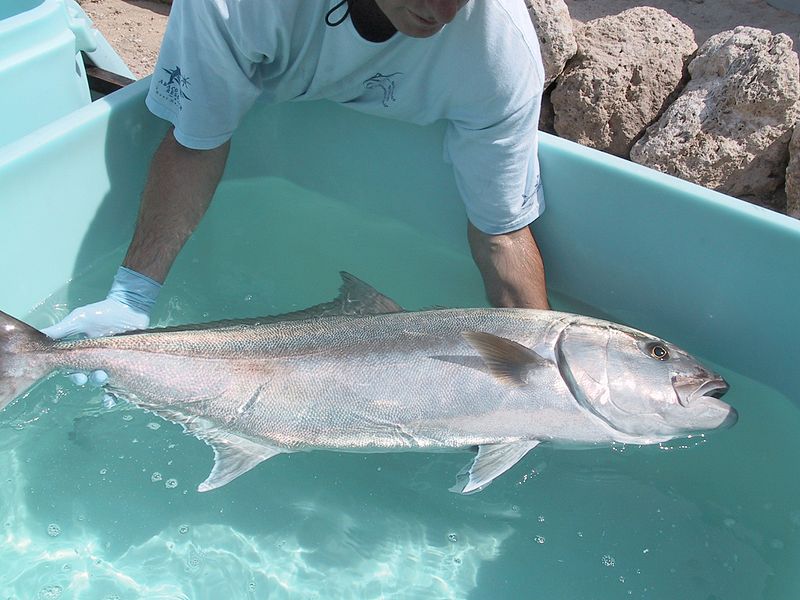In a follow-up on the “black urine disease” outbreak, which affected some 50 people in Bahia state, Brazil from December to January, has been determined not to be due to a bacteria or virus, instead it is due an intoxication after eating fish, according to Brazilian researchers as reported in a Globo.com report (computer translated). This triggered what is known as Haff disease.

Image/U.S. National Oceanic and Atmospheric Administration
The study was based on the results of feces, urine and blood samples from 15 patients analyzed. Fourteen of the 15 people who reported symptoms reported consuming fish – most bulls eye (Seriola spp) and whiting (Mycteroperca spp). The 15th person said they ate Bahian food, which could possibly include these species.
In the samples, however, it was not possible to determine the substance that caused the intoxication. According to Antonio Carlos Bandeira, of the Federal University of Bahia (UFBA), a piece of fish that was ingested by a patient was referred to the Ministry of Health, which in turn sent the material to a laboratory in the United States. The result has not yet been released.
Haff disease is a syndrome of unexplained rhabdomyolysis following consumption of certain types of fish; it is caused by an unidentified toxin. Rhabdomyolysis is a clinical syndrome caused by injury to skeletal muscle that results in release of muscle cell contents into the circulation.
Intense muscle pain with Haff disease is associated with elevated levels of the enzyme creatine phosphokinase (CPK). These symptoms appear less than 24 hours after eating fish – in addition to pain, urine turns black and there is kidney failure.
Treatment is supportive and consists of administering large volumes of fluid early in the course of illness to prevent myoglobin toxicity to the renal tubules. Possible complications include electrolyte disturbances, renal failure, and disseminated intra-vascular coagulation. Symptoms usually resolve within 2-3 days. Historically, the case-fatality rate is approximately 1%.
Related:
- Brazil: Hospital Materno Infantil de Brasília (HMIB) NICU closed due to Serratia risk
- Yellow fever outbreak update: Cases increase in Espírito Santo
- Antiprotozoal drug, Pentamidine, used with antibiotics effective against ‘superbugs’: McMaster research


One thought on “Black urine disease in Brazil linked to eating fish, called Haff disease according to study”